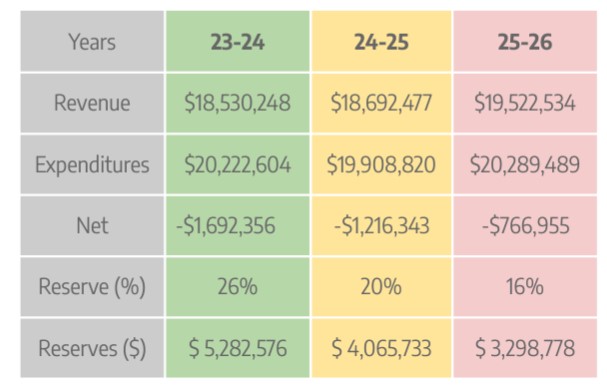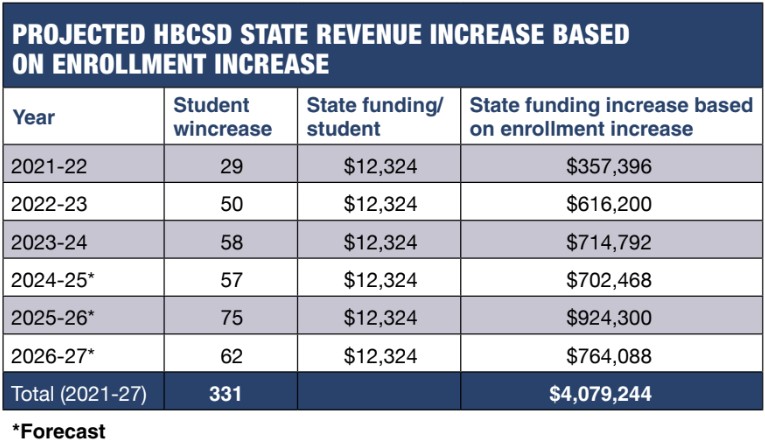by Kevin Cody
The Hermosa Beach City School District (HBCSD) is financially healthy by comparison to neighboring school districts. Its REU (Reserve for Economic Uncertainty) is 26%, well above the 3% the State requires, according to a budget update presented to the school board last month by HBCSD Business Manager Paula Montalbo
The Redondo Beach Unified School District’s reserve is 7.4%. The Manhattan Beach Unified School District’s reserve is 5% percent.

As a result of the strong reserves, Hermosa Schools superintendent Jason Johnson told the school board at its meeting last week he does not anticipate the need to lay off any employees next year. Manhattan Beach anticipates 32 employee layoffs next year.
Hermosa’s relatively strong financial health is in large part attributable to its success in attracting students, Johnson told the board. Schools are largely funded by State money based on ADA (Average Daily Attendance, or “students in seats”).
Hermosa’s ADA in 2018-19, the year before the pandemic, was 1,293 students. It fell to a low of 1,184 students during the 2020-21 pandemic school year. But this year it is forecasted to exceed pre-pandemic numbers, with an ADA of 1,331 students.
Redondo Beach Unified School District’s ADA, by comparison, has fallen every year since the start of the pandemic, from an ADA of 9,744 students in the pre-pandemic 2018-19 school year to a forecasted ADA of 9,066 students this school year.
The Manhattan Beach School ADA has also failed to recover from the statewide pandemic fall off. Its forecasted ADA for 2023-24 is 5,850, down from 6,311 in pre-pandemic 2018-19.
But in absolute terms, the Hermosa School District is still projected to operate at a deficit at least through the 2025-26 school year, according to last month’s budget update.
The district’s approximately $20 million annual budget over the next three school years is forecast to exceed annual revenue by approximately $1 million a year. To help cover the deficit, the district forecast drawing down its reserves from its current 26 percent ($5.3 million) to 16 percent ($3.3 million) in 2025-26.
In addition, Superintendent Jason Johnson said in an interview this week, the district plans to attack the deficit by attracting more students.
Johnson presented a report to the school board last week that showed enrollment is forecasted to increase 4% annually, or approximately by 60 students per year, through 2026-27.
Hermosa receives $12,324 annually per student from the State. So increasing enrollment by 60 students annually will result in an additional $740,000 annually in State funding.
“Enrollment is something districts have control over, which is why we have focused on our preschool, and transitional kindergarten (TK) programs. They feed kids into our upper grades,” Johnson said.
But increased enrollment, alone, won’t cover the district’s forecasted budget deficits, Johnson acknowledged.
At his State of the Schools address last September, Johnson reminded parents, “Every decade, a new generation of Hermosa parents has helped to pay it forward.” In 2002, Hermosa voters approved a $14 million school bond used to remodel Valley School. In 2016, voters approved a $59 million school bond to build the new Vista School on the old North School campus, as well as remodel View School.
Johnson said he is counting on the current generation of parents to pay it forward during next November’s general election.
A phone survey conducted by the district last June found that voters would approve a bond of approximately $24 million. Johnson said the district’s plans for the bond money include new science labs at Valley Middle School, and safety improvements throughout the district. ER










